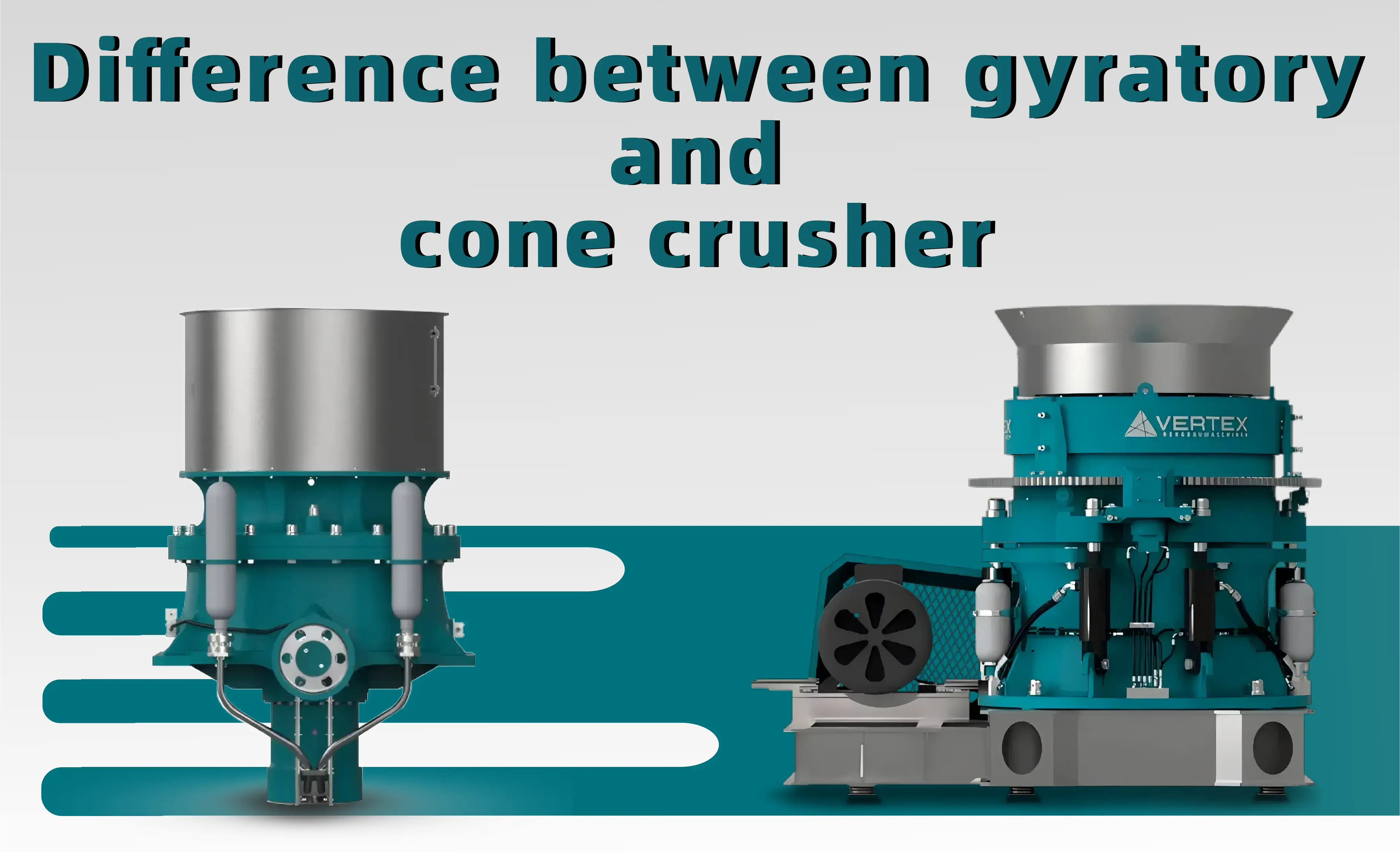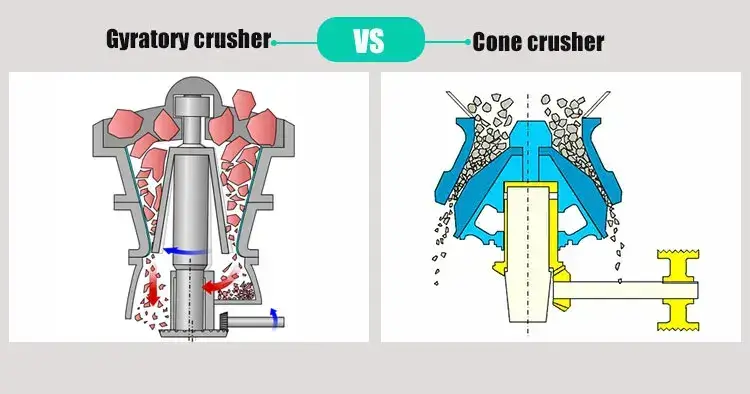
When it comes to hard rock mining and material processing, understanding the differences between gyratory and cone crushers is crucial for making informed equipment choices. Both play significant roles in the crushing process, but their designs, applications, and performances vary notably. Here’s a detailed exploration of the key distinctions between these two essential machines.
Gyratory Crusher: As a primary crushing machine, the gyratory crusher is designed for large-scale hard rock mining operations. It crushes materials by the periodic swinging motion of a movable cone, ideal for processing massive chunks of ore directly mined from the earth.
Cone Crusher: Primarily used for secondary or tertiary crushing, the cone crusher utilizes the squeezing and bending actions between a moving cone (mantle) and a stationary cone (concave). It excels in refining previously crushed materials into finer, more uniform sizes.
Gyratory Crusher: Features a vertically elongated crushing chamber with a large feed opening, accommodating huge raw ore pieces.
Cone Crusher: Boasts a more compact crushing chamber, tailored for processing materials that have already undergone primary crushing.
Gyratory Crusher: Comprises a fixed cone (outer cone) and a movable cone (inner cone), with a discharge opening at the bottom designed for continuous, high-volume material flow.
Cone Crusher: Works with a mantle (moving part) and a concave (stationary part). Advanced models, such as hydraulic cone crushers, incorporate hydraulic adjustment systems to optimize crushing parameters.
Gyratory Crusher: The movable cone performs an eccentric rotational motion, continuously crushing materials in a vertical direction. This design suits large-scale, continuous production.
Cone Crusher: The mantle executes a gyratory swinging motion, enabling multiple cycles of material compression within the chamber. This approach focuses on fine, precise crushing.
Gyratory Crusher: Operates with a low frequency but a large stroke, effectively handling big chunks during primary crushing.
Cone Crusher: Features a high frequency and a smaller stroke, ensuring uniform particle sizes in fine crushing processes.

Gyratory Crusher: Exclusively used for primary crushing in mines, breaking down as-mined large ore blocks (e.g., in iron ore or copper ore mining initial stages).
Cone Crusher: Widely applied in secondary or tertiary crushing. It further processes previously crushed materials into construction aggregates or refined ore materials, fitting well in quarries and concentrators for medium to fine crushing tasks.
Throughput: Gyratory crushers handle much larger volumes (up to thousands of tons per hour), meeting the high-output demands of large mines. Cone crushers have relatively lower throughput but offer better energy efficiency, ideal for refined production.
Product Granularity: Gyratory crushers produce coarser outputs, focusing on “breaking big chunks.” Cone crushers deliver finer, more uniform particle sizes, satisfying the precision requirements of subsequent processing.
Gyratory Crusher: With a complex structure, replacing internal components requires professional operation, leading to higher maintenance costs.
Cone Crusher: Advanced models (like hydraulic cone crushers) include automated maintenance features (such as hydraulic cavity cleaning), simplifying upkeep.
Both machines require attention to wear-resistant parts like crushing walls and mantles. However, due to more concentrated crushing forces, some wear parts in cone crushers might need replacement more frequently.
Initial Investment: Gyratory crushers involve higher initial purchase costs due to their large-scale design. Cone crushers offer more budget-friendly options, especially with diverse model choices.
Operational Costs: Gyratory crushers consume more energy but are cost-effective for large-scale production. Cone crushers have lower energy consumption, ensuring more controllable overall operational expenses.
At Vertex, we offer cutting-edge cone crushers designed to excel in various crushing scenarios:
Advantages: The multi-cylinder hydraulic system allows precise control over crushing parameters. It efficiently processes hard rocks, ideal for medium crushing applications. With energy-saving features, it ensures stable output.
Advantages: The single-cylinder design simplifies the structure, making maintenance easier. Focused on fine crushing, its automated crushing chamber adjustment enhances finished product precision.
Advantages: The classic spring buffer design withstands impacts from high-hardness materials, ensuring durability. Suitable for secondary crushing, it offers excellent cost-performance.
Service: We provide customized solutions, covering equipment selection, installation, debugging, and post-sales maintenance. Our professional technical team ensures timely responses to meet all client needs.
Philosophy: Centered on the concept of “Innovation Drives Efficient Mining,” we focus on optimizing equipment performance and sustainable development. By delivering advanced crushing technologies, we aim to reduce clients’ operational costs and contribute to green, efficient mining practices worldwide.